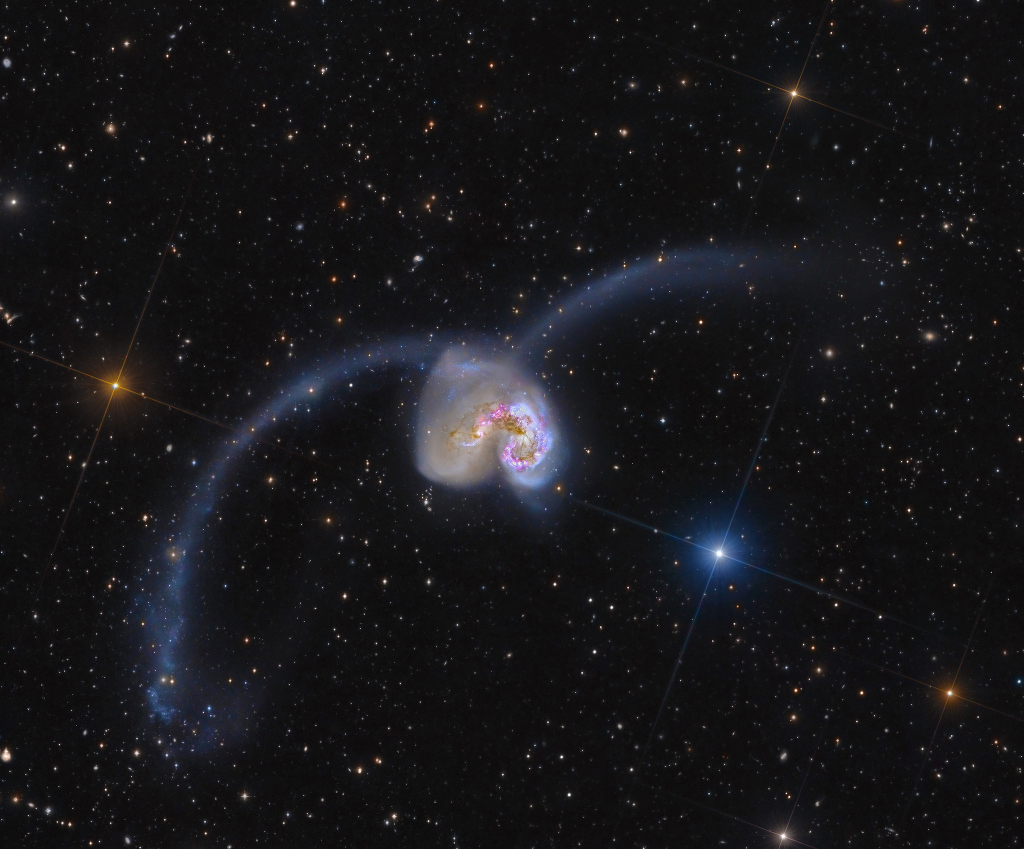 |
Edwin Hubble's original classification of nebulae
image W. Baade Evolution of stars and galaxies |
Zooniverse is a brilliant web site representing the true essence of networking - bringing people power together to help solve questions. The site is a tool that has created a new kind of analytic tool by globally connecting thousands and thousands of human brains for observing and classifying massive amounts of scientific data.
The current Zooniverse projects include studies in six important fields of research: Space, Climate, Humanities, Nature, Biology and Physics. Everyone can participate in these real science projects from interested individuals to class rooms of students and highly trained specialists. Everyone both contributing and learning in the process.
One can hardly imagine a more exciting way to learn by doing than this - what and amazing idea!
Galaxy Zoo
Zooniverse space projects include visual examination of astronomic photos of deep space to determine shapes of galaxies in the footsteps of Edwin Hubble. A
Galaxy Zoo page tells that the project began in June 2007 "with a data set made up of a million galaxies imaged by the Sloan Digital Sky Survey"
The Sloan Digital Sky Survey or SDSS is a major multi-filter imaging and spectroscopic redshift survey using a dedicated 2.5-m wide-angle optical telescope at Apache Point Observatory in New Mexico, United States. The project was named after the Alfred P. Sloan Foundation, which contributed significant funding.
Data collection began in 2000, and the final imaging data release covers over 35% of the sky, with photometric observations of around 500 million objects and spectra for more than 1 million objects. The main galaxy sample has a median redshift of z = 0.1; there are redshifts for luminous red galaxies as far as z = 0.7, and for quasars as far as z = 5; and the imaging survey has been involved in the detection of quasars beyond a redshift z = 6.
wikipedia
The immediate global success of the Galaxy Zoo project surprised the organizer: 70.000 galaxy classifications arrived an hour! That is significant manpower united in contributing to a single project. In summer 2008 the project had gathered about 50 million classifications from 150.000 contributors around the world. (
Galaxy Zoo story).
Dealing with massive data
There is no supercomputer that is smart enough to do what human brain can do when looking at the image of a distant galaxy. There is no institution in the world that could field 200.000 volunteers to examine the Sloan photos - the logistics are overwhelming and paying for the contributions beyond the reach of Fort Knox. So we can call this a new kind of scientific tool for space exploration, analyzing visual data and spotting differences and exceptions in the data. Marvelous!
"The task in that first Galaxy Zoo was slightly simpler than yours; all we asked volunteers to do was to split the galaxies into ellipticals, mergers and spirals and - if the galaxy was spiral - to record the direction of the arms."
With such task definition it is clear that a 12 year girl in school class may see things differently from a 32 years old amateur astronomer familiar with galaxy research. But wisely the project does not filter the data with some algorithm but rather take the massive input as is with basic statistics on disagreements and agreements by various contributors:
"That meant that each galaxy was seen by many different participants. This is deliberate; having multiple independent classifications of the same object is important, as it allows us to assess how reliable our results are. For example, for projects where we may only need a few thousand galaxies but want to be sure they're all spirals before using up valuable telescope time on them, there's no problem - we can just use those that 100% of classifiers agree are spiral. For other projects, we may need to look at the properties of hundreds of thousands of galaxies, and can use those that a majority say are spiral."
Current status of Galaxy Zoo
"The present day Galaxy Zoo combines new imaging from Sloan, giving us our best ever view of the local Universe, with the most distant images yet from Hubble's CANDELS survey. The CANDELS survey makes use of the new Wide Field Camera 3 - installed during the final shuttle mission to Hubble - to take ultra-deep images of the Universe, so who knows what's out there to be found?"
Well done - and this is only one of the Zooniverse projects!




